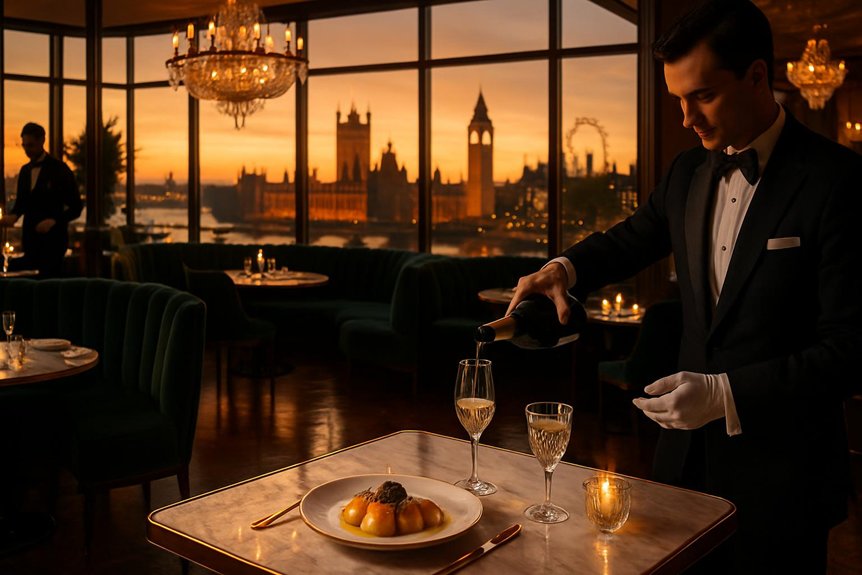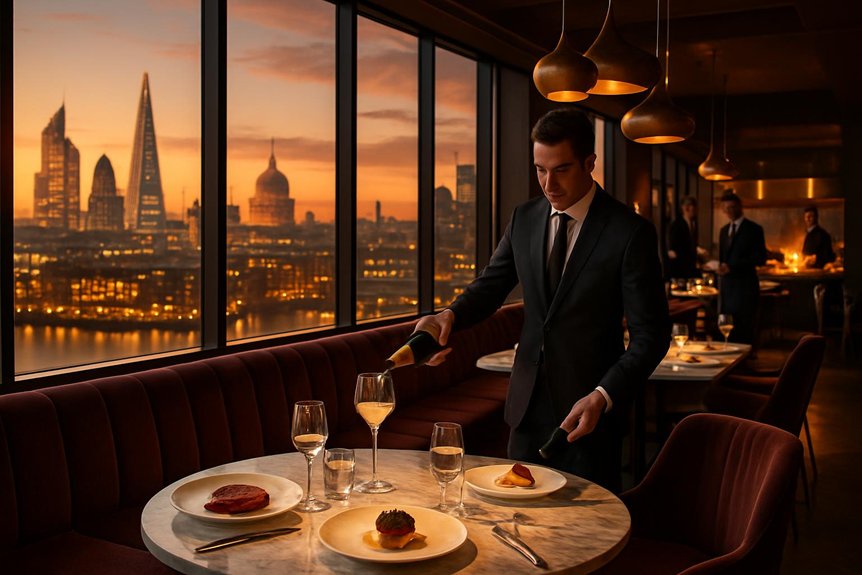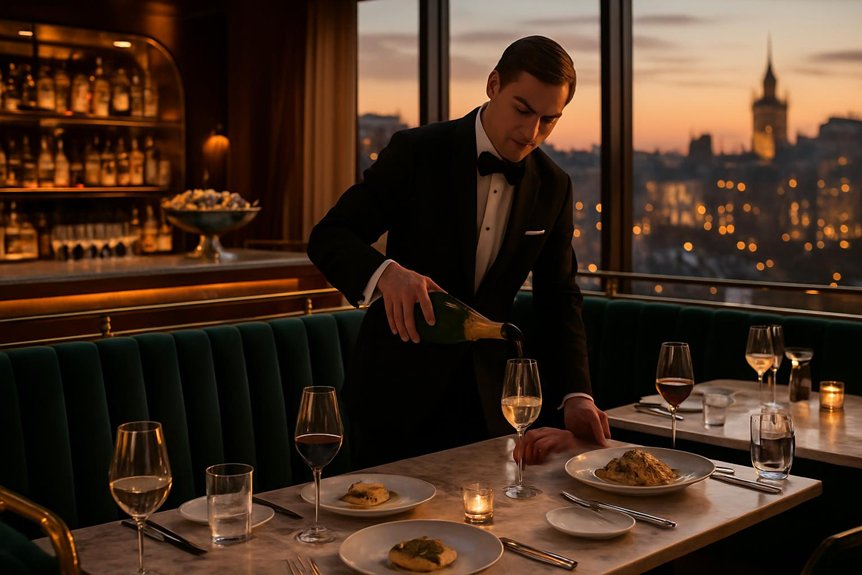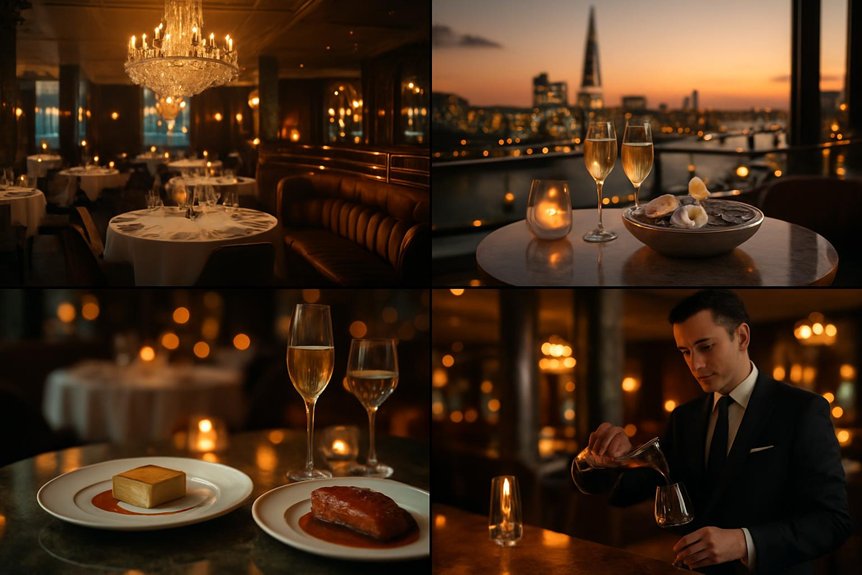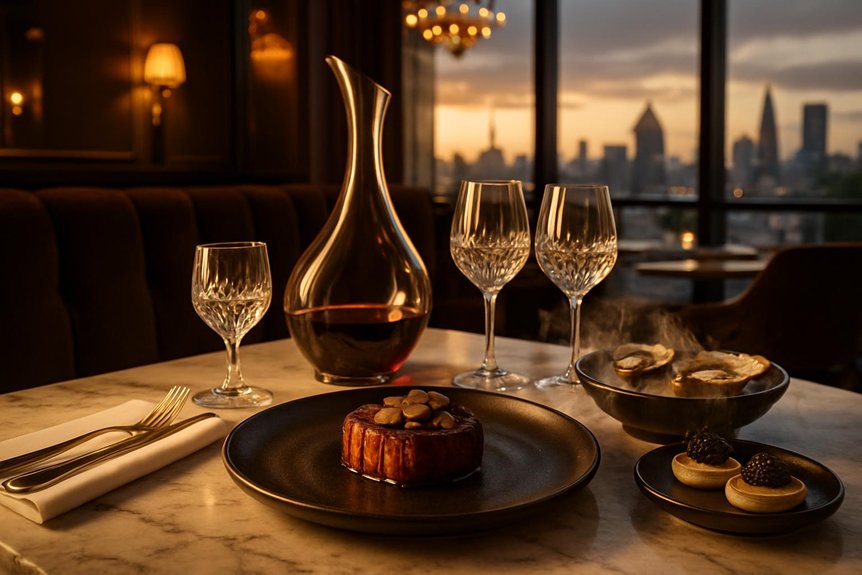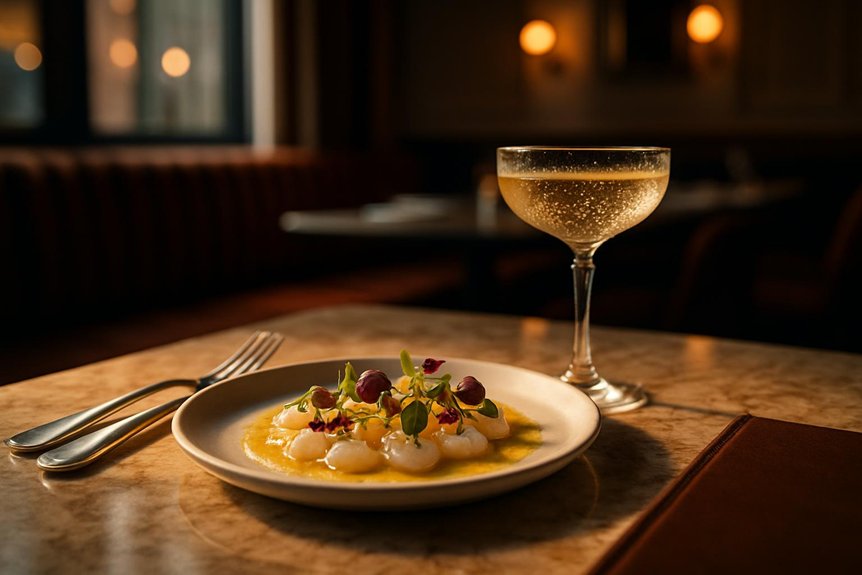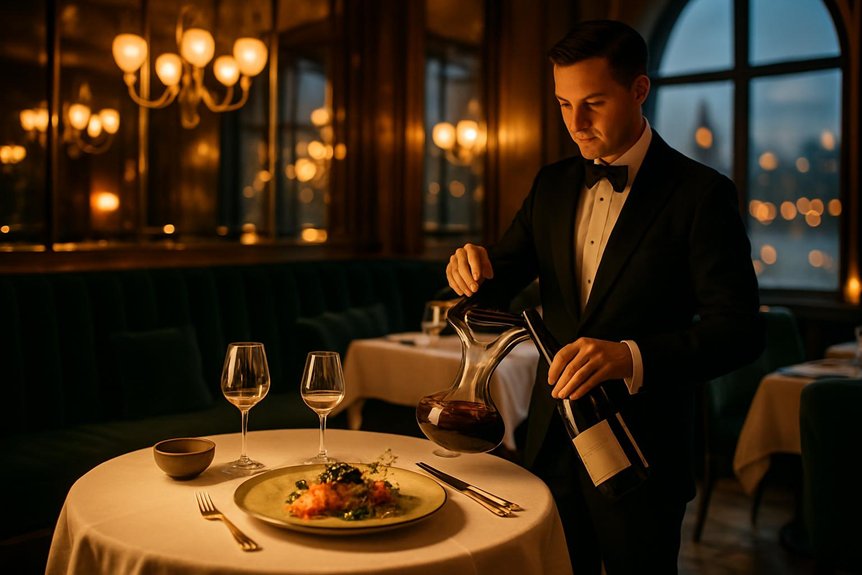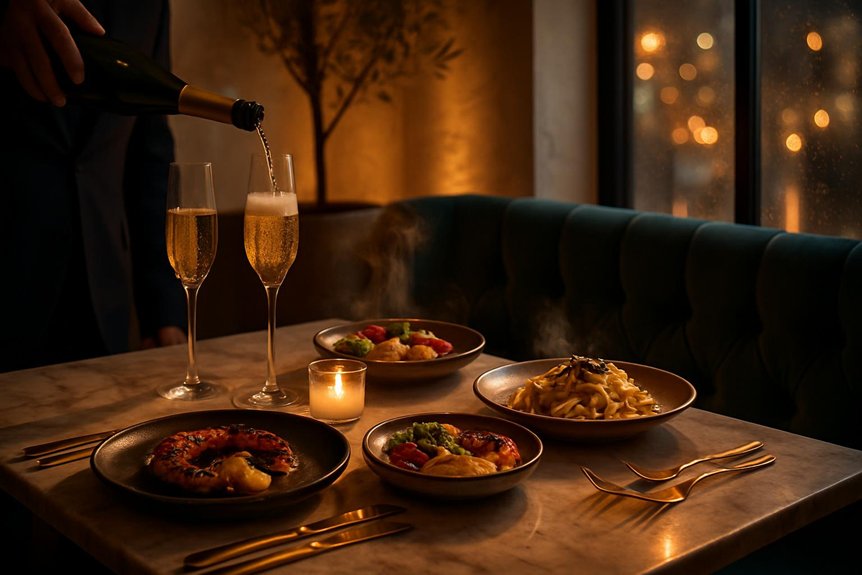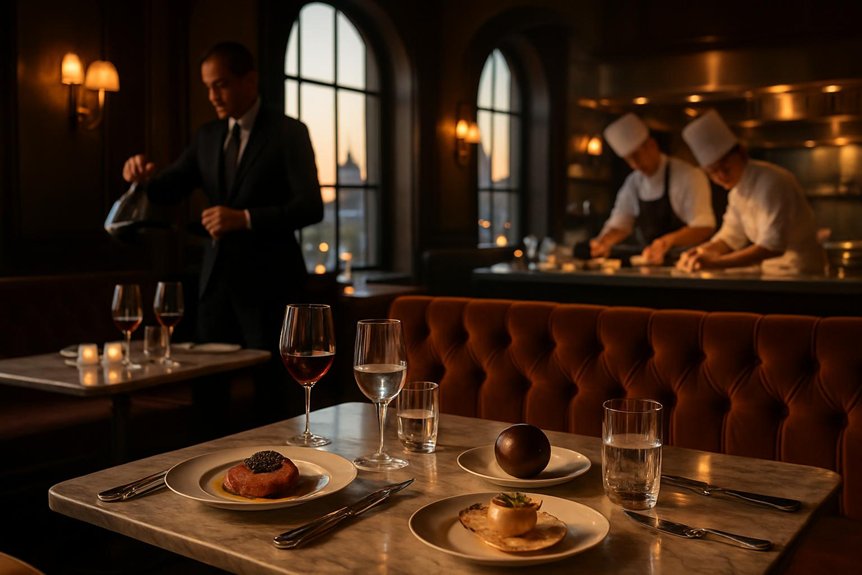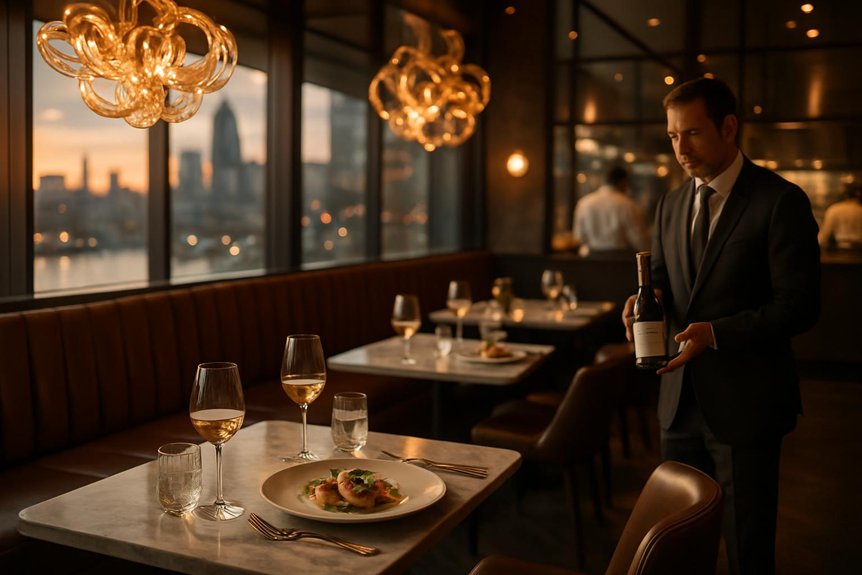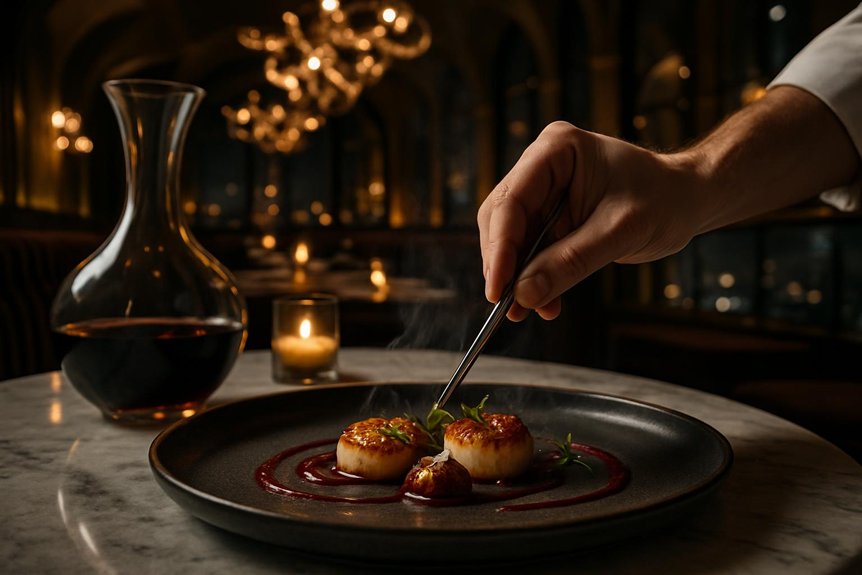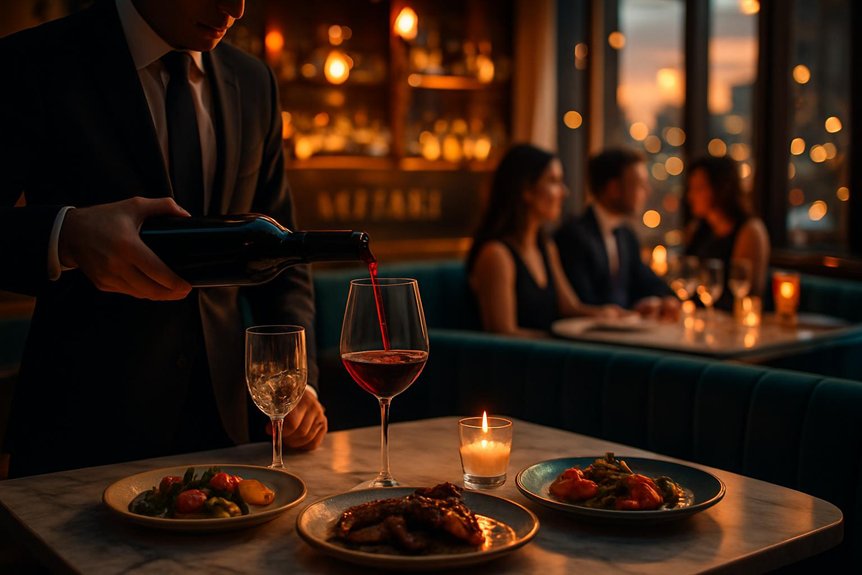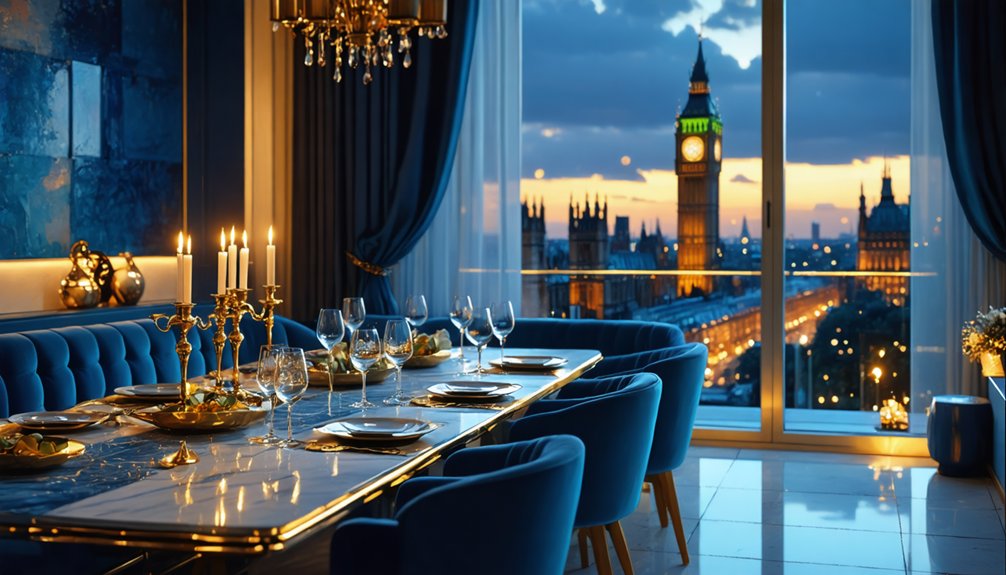London’s most rarefied dining rooms project calm assurance rather than spectacle. Michelin stalwarts refine classics with quiet precision. Townhouse hideaways trade in hushed service and linen-crisp poise. Above the skyline, cocktails frame the city like a private gallery. At chef’s counters, craft unfolds plate by plate. Cellars whisper of vintage intent, pairings measured and exact. The tables are few, the waitlists longer. What matters is how these rooms orchestrate time itself.
Michelin-Starred Icons Redefining Fine Dining
Among London’s most influential tables, Michelin-starred restaurants lead with exacting technique, visionary tasting menus, and service calibrated to minute detail. Here, Culinary innovation intersects with Gastronomic traditions, producing plates that balance heritage and modernity without spectacle for spectacle’s sake. Chefs interrogate provenance, reduce waste, and refine textures, turning familiar British staples into rigorous studies in seasonality and precision.
Menus evolve like editorials: concise, sequential, and intentional. Bread, butter, and sauces act as quiet theses on craft; desserts conclude with structural clarity rather than excess sweetness. Pairings prioritize restraint—minerality, acidity, and subtle aromatics—framing flavors rather than overpowering them.
Dining rooms remain measured: acoustics softened, lighting purposeful, choreography discreet. The result is not opulence but focus—culinary ideas articulated with discipline and lasting resonance. Experience a vibrant atmosphere at Meraki Restaurant, where smart dress code is required for attendees, enhancing the elegant dining experience.
Discreet Townhouse Gems With Impeccable Service
Though the city’s flashiest rooms draw headlines, the true confidences of London luxury often unfold behind townhouse facades—bell-pulls polished, brass discreet, carpets hushed. Here, service is anticipatory but invisible, orchestrated by staff who memorize preferences and move with library quiet.
Menus favor precision over spectacle, seasonal ingredients treated with restraint and confidence.
Dining rooms are intimate: panelled salons, firelit corners, and a handful of tables spaced for unhurried conversation. Private rooms offer privacy enhancements without ostentation—sound-dampened walls, separate entrances, and hushed corridors that shelter high-profile guests.
Wine programs are curated rather than sprawling, guided by sommeliers who speak softly and select wisely.
Luxury amenities remain tactile and thoughtful: handwritten notes, pressed linens, monogrammed matchbooks, and candlelight calibrated to flatter both plate and company.
Meraki offers a blend of intimacy and elegance, focusing on Mediterranean cuisine with a commitment to authenticity and innovation.
Skyline Sanctuaries for Panoramic Nightcaps
As daylight thins to a graphite sheen, London’s highest perches turn contemplative—rooms of glass and steel calibrated for late-hour elegance. From Shard-height lounges to riverside eyries, the city’s skyline sanctuaries frame the Thames in ribbons of light, inviting unhurried conversation and poised repose.
Here, rooftop ambiance is design and atmosphere in tandem: low-slung banquettes, hushed soundtracks, candles steady against the breeze.
Bartender artistry sets the tone. Crystal-cold martinis, smoked highballs, and perfumed spritzes arrive with measured ceremony, each glass a quiet thesis on balance. Service is anticipatory yet invisible; sightlines remain unbroken.
Guests drift between terrace edges and picture windows, letting London’s constellations—bridges, domes, ferris-wheel arcs—conduct the evening. The result is a clean finale: elevated, urbane, and resolutely nocturnal. One might find this cosmopolitan Greek atmosphere reminiscent of Meraki, where the dining experience is equally sophisticated and nourishing.
Chef’s Counters and Tasting Menu Masterclasses
At London’s chef’s counters, guests watch meticulous plating unfold inches away, turning dinner into a study in craft.
Seasonal tasting menus shift course by course, showcasing peak ingredients and refined technique.
Sommelier-led pairings calibrate each pour to amplify texture, aroma, and finish.
Intimate Counter Experiences
In London’s luxury dining scene, chef’s counters and tasting menu masterclasses offer front‑row access to culinary craft. Seats are limited, sightlines unobstructed, and the choreography precise: knives whisper, sauces gloss, and courses land in synchronized succession.
The format spotlights technique, provenance, and plating with a calm, intimate ambiance that amplifies each detail.
These counters often echo the attentiveness of a private chef while preserving the dynamism of a professional brigade. Dialogue replaces distance; questions meet immediate demonstration. Guests witness fire and restraint, learn why textures matter, and taste progression plate by plate.
Reservations are scarce, pacing deliberate, and hospitality finely tuned—napkins refolded, preferences noted, pours calibrated. For diners seeking precision and proximity, these experiences distill luxury to craft, conversation, and measured theater.
Seasonal Tasting Evolutions
From the hush of the counter, another rhythm emerges: menus that shift with the market and the tide. Here, chefs choreograph courses as brief narratives, each plate a chapter in a season’s arc.
The focus is disciplined: seasonal ingredients, exacting technique, and evolving menus that pivot as fishermen land catches and growers deliver first harvests.
At chef’s counters, the lesson is visible. Knife work becomes commentary; timing, the thesis.
A tartlet might showcase spring peas today, then cede to girolles tomorrow. Broths clarify, reductions deepen, and garnishes recede to let provenance speak.
Reservations promise a seat, not sameness. Guests witness edits in real time—courses added, subtracted, refined—an ongoing masterclass in restraint and renewal, where fleeting produce dictates pace, sequence, and tone.
Wine Pairings Perfected
Wine pairings at London’s chef’s counters move with the same precision as the tasting menus they accompany, calibrated sip by sip to contour texture, temperature, and umami. Sommeliers choreograph sequences that spotlight artisanal varietals, placing alpine whites before saline shellfish, then pivoting to skin-contact nuance for root vegetables and smoke. Sparkling entries refresh the palate; oxidative sherries underline caramelized crusts.
Micro-pours trace aging techniques: amphora-bright acidity meets raw courses, while neutral oak rounds delicate custards. Mature Burgundy dovetails with slow-roasted game; lean, maritime reds frame charcoal-seared fish. Sake interludes tune sweetness to tare and miso. Nonalcoholic pairings mirror structure with verjus, tea, and hydrosols. The counter becomes a seminar—tempo, extraction, and terroir articulated course by course, leaving harmony as the final note.
Vintage Cellars and Inspired Pairing Programs
London’s elite dining rooms spotlight rare vintages, drawing from storied cellars with provenance to match. Guests are guided through sommelier-led pairing journeys that calibrate each pour to the plate’s structure and seasonality.
Several venues advance cellar-to-table experiences, where selections are pulled in real time to underscore freshness, history, and intent.
Rare Vintages Spotlight
A select cadre of dining rooms treats the cellar as a stage, curating rare vintages with the rigor of a museum and the warmth of a host. Here, vintage spotting becomes part ritual, part reconnaissance: a 1961 Pauillac glimpsed tableside, a late-disgorged blanc de blancs emerging from hibernation, a Madeira older than the building itself.
The rarity collection is cataloged with forensic care, yet poured with restraint, preserving provenance while inviting discovery.
Transparent boards list minuscule allocations, release dates, and provenance trails, allowing guests to calibrate ambition. Daily “library moments” surface one bottle at peak, avoiding theatrics in favor of timing.
Menus adapt subtly around these appearances, favoring texture and temperature control that safeguard nuance, letting the bottle’s history, not hype, carry the conversation.
Sommelier-Led Pairing Journeys
From those meticulously tended cellars, the experience shifts tableside as sommeliers map tasting arcs with the precision of conductors. They read the menu’s cadence, then plot pairings that progress by texture, acidity, and aromatic lift.
Each pour is contextualized by wine region, producer intent, and vintage temperament, ensuring a narrative that complements rather than competes.
Guided flights might open with saline-driven whites, pivot to graphite-etched reds, and conclude with oxidative grace notes.
Cork selection becomes part of the ritual—evaluated for integrity, provenance, and storage history—before a controlled decant calibrates oxygen and temperature.
Guests receive concise insights, not lectures: why a mountain nebbiolo tightens with game, how lees aging amplifies umami, where a coastal chenin refreshes spice.
Precision yields harmony, and the table feels orchestrated.
Cellar-To-Table Experiences
Behind discreet doors and temperature-steady corridors, vintage cellars anchor programs that bring provenance directly to the plate. In London’s grand dining rooms, cellar-to-table rituals emphasize traceable bottles, disciplined service, and calibrated temperatures that honor the maker’s intent.
Menus flex to vintages: sea bream with a saline Chablis, fall grouse with mature Barolo, late-season pears beside a waxy Sauternes.
Precision begins with cellar design—vibration control, zoned humidity, and light management—ensuring stability for rare formats. Sommeliers present decanters, Coravin systems, and measured pours, deploying wine accessories as tools, not theatrics.
Guests preview labels in situ, then follow the bottle to the table, where pacing aligns with cuisine. The result is an experience that transforms storage into narrative, and pairings into memory.
Hard-to-Book Tables Worth the Chase
Securing a seat at London’s most coveted dining rooms demands patience, timing, and strategy, but the payoff often justifies the pursuit. The reservations challenge is real: books open weeks ahead, lines go silent within minutes, and waitlists stretch. Yet those who persist often gain exclusive access to singular experiences—chef’s counters with limited seats, off-menu tastings, or one-off cellar pours.
Tactics matter. Monitoring release windows, setting alerts, and accepting late-night or weekday slots improves odds. Concierge services and credit card programs occasionally unlock priority holds, while polite follow-ups can surface cancellations.
Flexibility with party size is decisive; pairs often land prime counters. Ultimately, the chase favors planners willing to adapt, and the reward—precision cooking, attentive pacing, and palpable theater—validates the effort.
Conclusion
In the end, London’s luxury dining scene reveals itself as a symphony of restraint and brilliance—where technique, service, and setting move in quiet concert. From hidden townhouses to glittering rooftops, each venue offers nuance over noise, intimacy over spectacle. Chef’s counters whisper craft; cellars speak in vintages; reservations demand foresight. Like a silk thread stitching moments into memory, these experiences bind elegance to flavor, ensuring every course lingers long after the final glass is set down.
